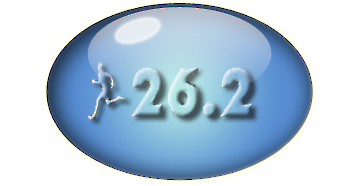Base Training under 4 hours
This section is for people who have a strong background in running. If this is your first marathon and you are a beginner or intermediate runner, then it will be better for you to train at a level that will give you the most benefits. Even if you consider yourself an experienced runner if you have not broken 50 minutes for a 10k, or 7 minutes for a mile then you might be are overreaching and should go down at least one level.
Runners in the four hour range may have the most diverse training schedules of marathon runners. For this system to work, some of those schedules may have to change. In the Base Training phase, the most important run is the weekly Long Run. All other runs are supporting runs. As an example, there is more value in running the long run with smaller supporting runs where the total mileage adds up to 40 miles a week, then to run the same mileage every day that totals 50 miles a week. Some of you are running the same mileage every day while others may only be weekend runners. For this group, I will provide different examples on what your training schedule may look like. It will be up to you to choose what will fit in your time schedule. ( See workout training schedules)
The goal in Base Training, is to slowly build your endurance and strength. We need to do this in a system where we minimize any chance of injury. The first ten to 14 weeks are the set up for the workout phase. The vast majority of the runs in the Base training Phase will be at an easy pace. If you have a running partner, you should be able to converse with them. If you are out of breath while trying to speak, then you are running to hard.
Many experienced runners are familiar with the concept of hard/easy days. We will only employ true hard/easy workouts in the last 10 weeks during the workout training phase. The concept here is straightforward. In the Base Training phase, everything is easy other than the LONG RUN. In the Base Training phase, you should not have to recover from the previous day’s run with the exception of the Long run. If you feel fatigued between runs, then you are running to hard.
I am not opposed to taking days off, especially in the base training phase. If you do take days off running, I suggest you take the ‘second’ day off after the long run. This is because your run the day immediately following your long run is perhaps the second most important run of the week (the first being the Long Run). This short run should be at an extremely easy pace. This will help you recover quicker by flushing out the lactic acid. It will bring fresh oxygenated blood to your fatigued muscles which will help them heal faster. Be careful! After a hard workout you are more prone to injuries. Never run a race or any hard workout the day after your Long Run! For those who are unable to get a run in the day after a Long Run, then it is best to try and walk after dinner. This will help all your workouts later in the week.
Women near the three hour range may consider adding mileage. The best way to do this is to add a second run. This run is conducted at an easier pace then your easy runs. It is an essentially long warmup, followed by some relaxed running. Even though, the run is short, it is still necessary to cool down. This run can add significant amounts to your running with minimal risk of injury. This run besides adding mileage has other benefits. The extended warmup allows the body a quicker recovery from hard workouts. Usually most of the stiffness will be removed before the afternoon workout. This also allows one to get more quality miles in the afternoon workout even though that workouts mileage remains the same.
Base Training schedule for under 4 hours
